Notes
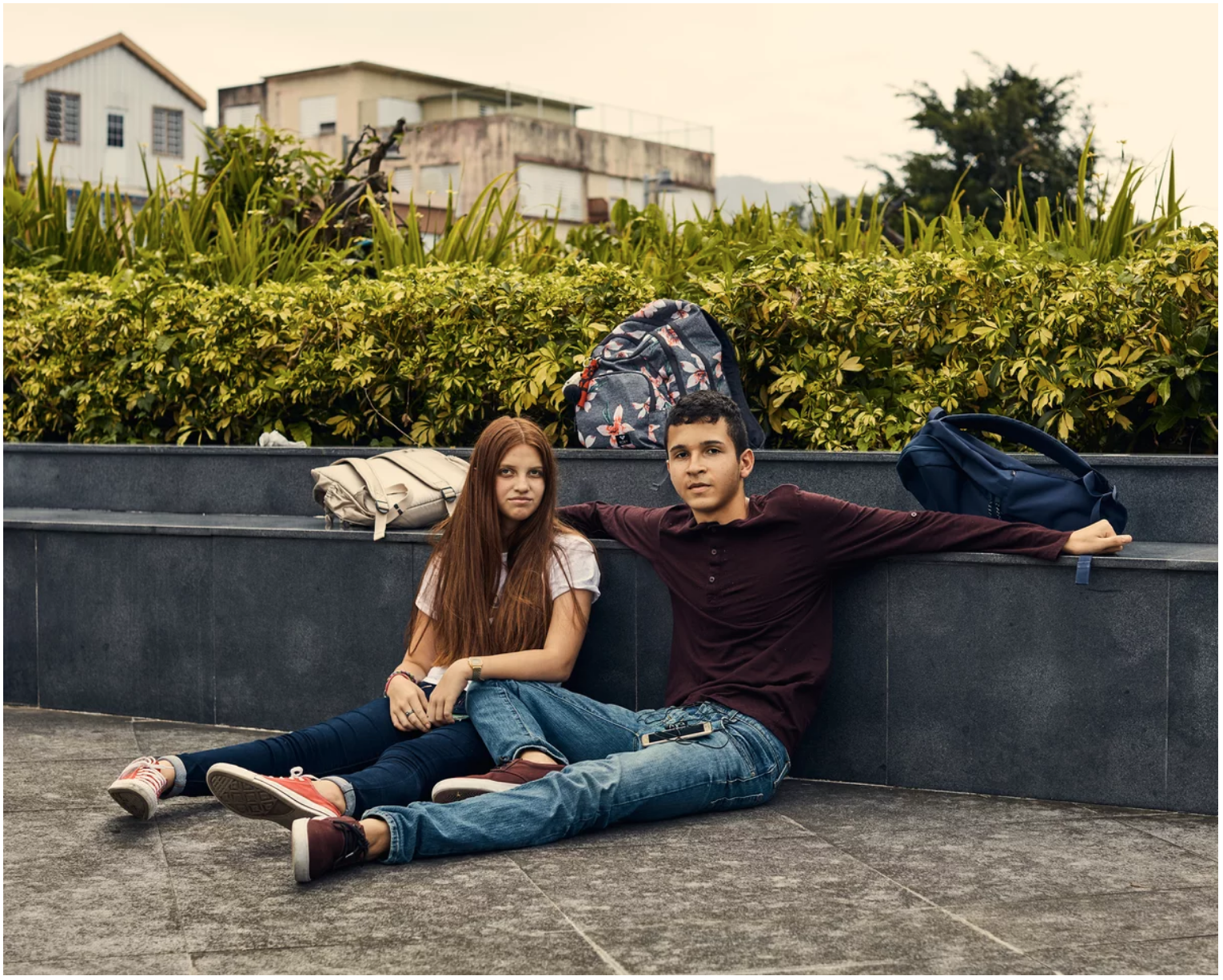
Slow Violence, Slow Photography: Chris Gregory’s Portrait of Puerto Rico after Maria
Last week, TIME included Chris Gregory’s Puerto Rico imagery in its best portraiture of the year. As a major event that received far less attention than it deserved in 2018, Christa Olson takes us back to Puerto Rico through Gregory’s photography.
How do you photograph systemic failure? How do you photograph the long tail of the United States’ brutal, gradual, incompetent betrayal of Puerto Rico after Hurricane Maria? Christopher Gregory does it through juxtaposition. He moves from portraits to infrastructure and back again. He pairs photographs in diptychs that simultaneously jar and gel. He pictures Puerto Rico one year after Hurricane Maria but makes the hurricane seems like yesterday.
The photographs show massive, life-changing devastation in muted tones and from blasé angles. In all these contrasts, Gregory’s images echo the slow violence described in the article they accompany, Karl Vick’s “In Puerto Rico, Many of the 3,000 Deaths Were Slow and Painful. Just Like the Recovery.” Through juxtaposition, Gregory makes U.S. colonialism and the United States’ pitiful “disaster response” into the simultaneously quotidian and extraordinary catastrophe it is.
Vick’s article tells the story of one neighborhood after Hurricane Maria.
Once the storm itself had passed, the physical devastation that closed roads, obliterated the electrical grid, and swamped hospitals began to take its toll. “Three deaths in the space of a tenth of a mile,” multiple near misses, and an exodus of young people show the effects not so much of the Hurricane as of the failure to imagine Puerto Rico as a place worth aiding. And so, Christopher Gregory seems intent on picturing a people worth saving by showing both those people and the failures of vision and humanity that compounded their plight before and after the storm.
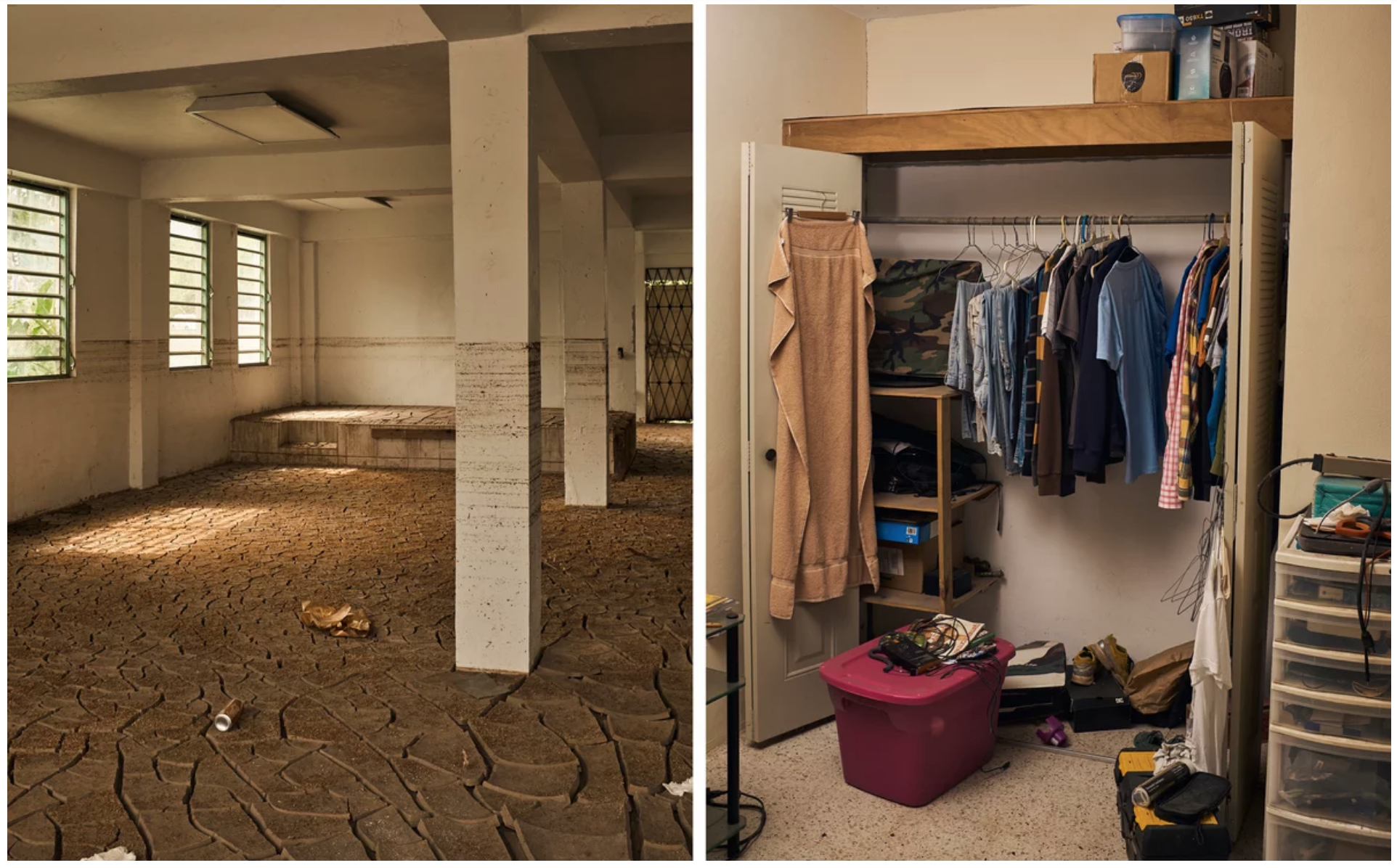
Caption: The water line in an abandoned building in the town center of Utuado; the closet of Javier García, as it looked when he left after the storm to join the Air Force.
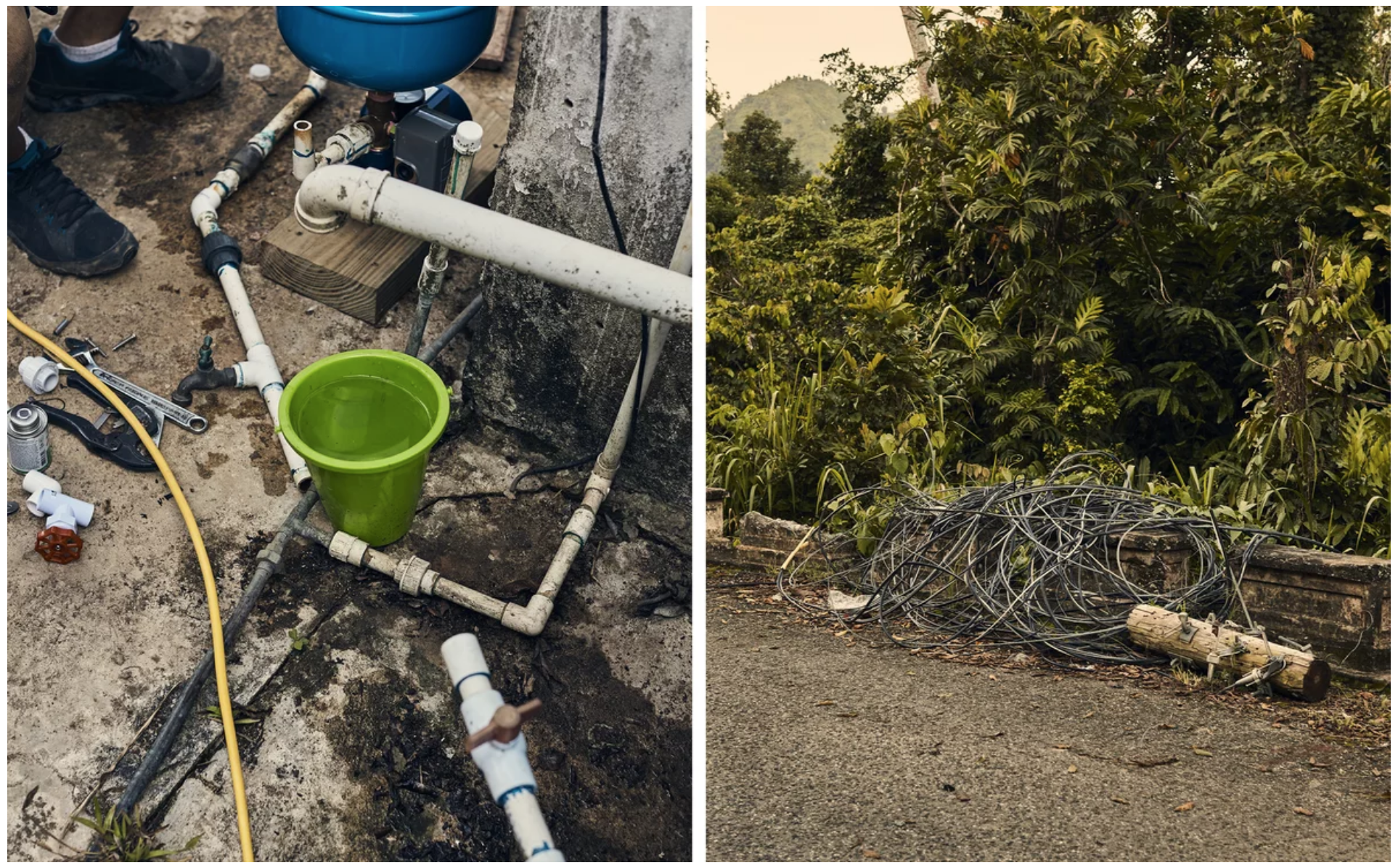
Caption: A water cistern under repair; downed power lines that have not been removed since the hurricane.
“In Gregory’s photographs, local loss and neglect take many forms and, consistently, draw our eyes from the local scene to the inaction and failure behind them.”
The exodus of young people from Utuado, Puerto Rico following Maria is almost an afterthought in Vick’s article.
Vick focuses on the neighborhood itself and the complicated task of facing and accounting for death. Out migration only comes up because it added difficulty to the work of establishing a death toll. Gregory’s photographs, however, draw parallels among the different sorts of loss experienced in Utuado, and death, destruction, and departure appear in equal measure.
The diptych above, for example, pairs the inside of a building with the inside of a closet. Taupes and browns predominate in both photographs, lending a shared feel of neglect and absence. But where the building interior shows abandonment through emptiness, the closet shows the mess of departure. Cracked mud cakes the floor of the abandoned building and an equally muddy high-water mark smears across pillars and windows. Clothes and a towel hang haphazardly in the closet, waiting for their owner to return and take them up again. Placed side-by-side, the pictures both establish that no one has been back.
In Gregory’s photographs, local loss and neglect take many forms and, consistently, draw our eyes from the local scene to the inaction and failure behind them. In this diptych, after all, we can read cause and effect in both directions: the storm, its aftermath, and the neglected recovery lead to departure and the slow loss of population as young people leave to find work and better lives. Viewed in either direction, we would be remiss if we didn’t see the slow violence of colonialism and the sudden destruction of the storm working in tandem.
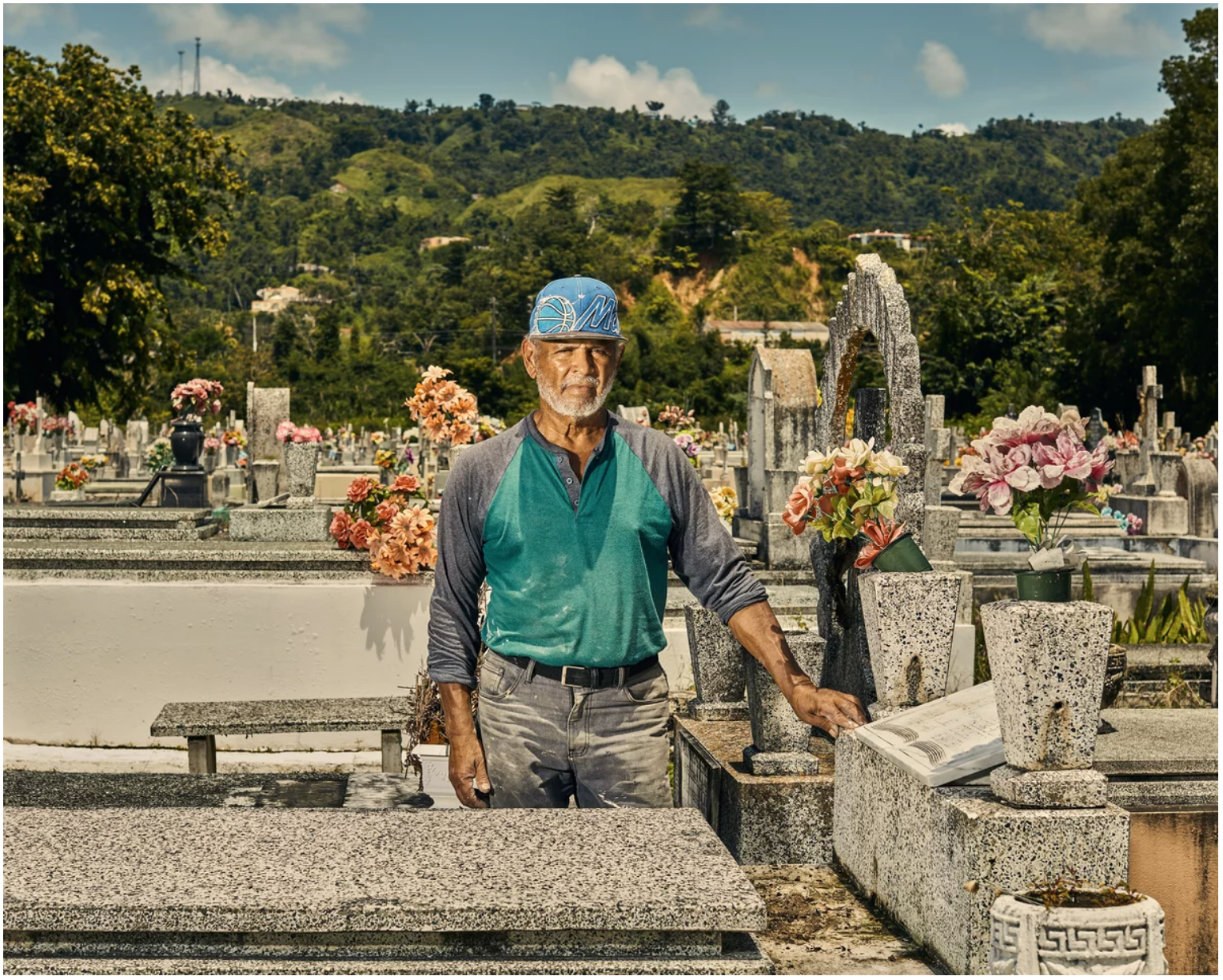
Caption: Gravekeeper Tulio Collazo Vega poses by the grave of three elderly sisters who were killed by a landslide the day Maria hit Puerto Rico.
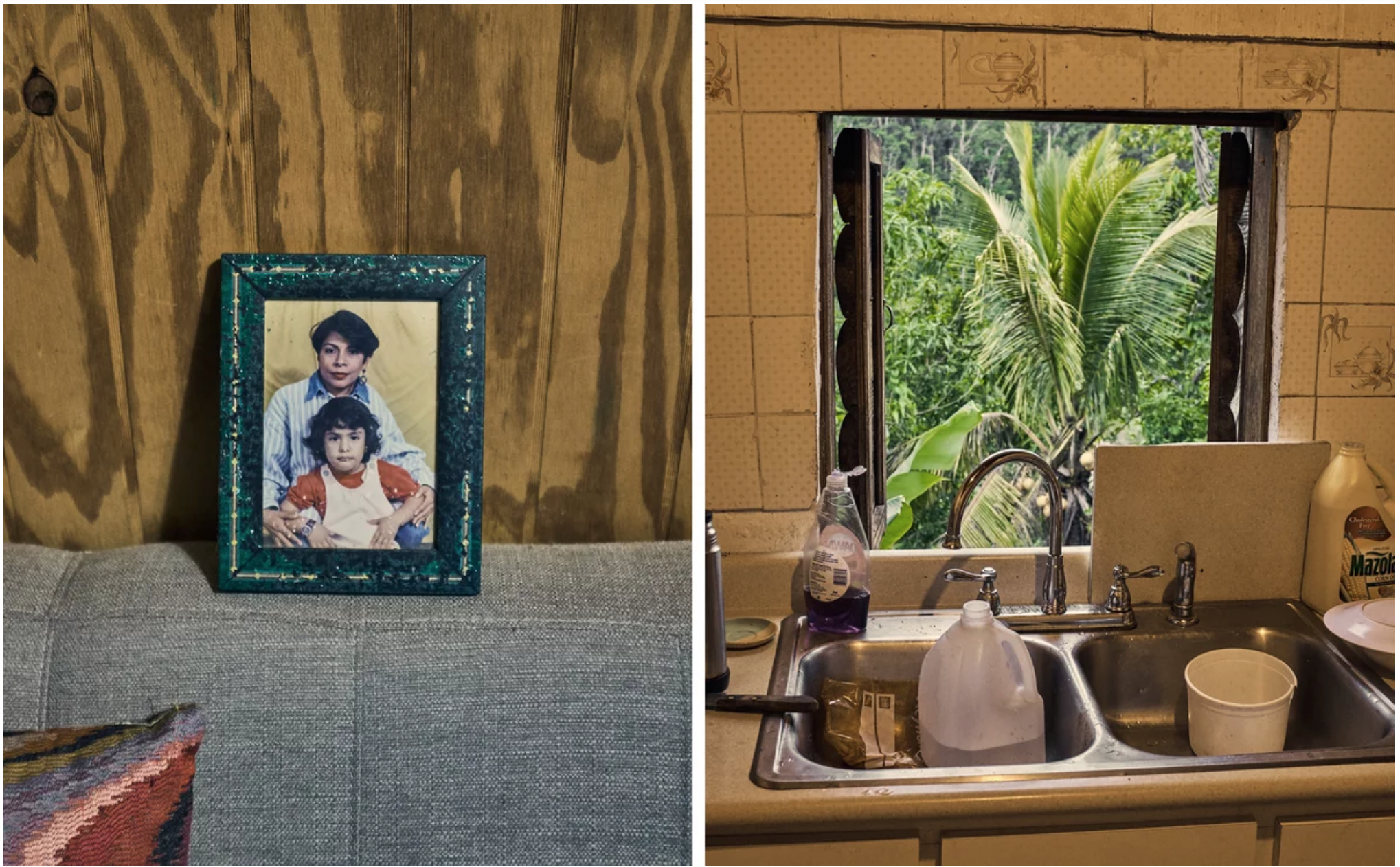
Caption: A portrait of the late Maribel Sánchez Flores when her daughter was a child; Magdalena’s kitchen.
“Death is, likewise, both sudden and lingering. It comes with a rush of mud or slowly strangling breath.”
That juxtaposition of slow and fast violence—storm and colonialism—recurs throughout the article. The picture on the right, above, for example, shows a tangle of cables still sitting on the side of a road a year after Maria. Underneath the discarded loops, the road’s ancient-looking guard wall crumbles. The lush foliage just beyond the road hints at tropical bounty, but the rich blue-greens and bright skies of tourist images are nowhere to be found. The sky looks weary; low contrast flattens the picture. “How long?” they ask. The disconnected PVC piping, cistern, tools, and bucket in the photograph on the left echo that question. The jumbled scenes make clear that despite their U.S. citizenship, Puerto Ricans are still being left to untangle the mess on their own, and they always have been.
In the roadside photograph and several others, a yellow-gray light suffuses the scene. So colored, the pictures seem both old and timeless. A creeping sepia ages them and sends the scenes they depict backward in time. Did the disaster occur a year ago or decades ago? Is the failed infrastructure we see in these photographs a result of natural calamity or colonial neglect?
Both, the infrastructure photographs reply. Always both.
And Gregory’s portraits re-emphasize that point, especially given how frequently they juxtapose the living and the dead. Tulio Collazo Vega poses in the midst of a cemetery, a grave keeper surrounded by his charges. He stands tall, a solid, living vertical in a world of aging, horizontal tombs. Though the caption tells us he stands by the graves of three women who died the day of the Hurricane, the photograph is steeped in old death. The granite around Collazo Vega is stained, the fake flowers overflowing their vases are faded, the arches in the background are encrusted with lichen. Life and death sit close together.
Another diptych in the series pairs a portrait of a portrait and the view out a kitchen window to make life and death similarly proximal.
In the pairing, Gregory draws attention to life within death by showing scenes within scenes. On the left, Maribel Sánchez Flores poses with her daughter in a framed formal portrait. Their photograph perches on the back of a chair or couch, forlorn yet treasured. Sánchez died more than a month after the storm, her severe asthma worsened by the debris and dust that blanketed the island in the aftermath and her care made difficult by a medical system that had not yet recovered. Gregory’s portrait within a portrait pays homage to her loss. Formally speaking, the other photograph paired with Sánchez’s portrait doubles it. Both images were taken in Sánchez’s mother’s home.
The kitchen window in the right-hand photograph, like the portrait on the left, opens into another world—lush and alive, even if yellowed. Inside the house, though, there are signs of loss and neglect: a sink filled with a jug and bucket hint at an unreliable water supply and inconsistent plumbing. Paired worlds of life and loss place tragedy and indignity—fast violence and slow violence—alongside each other.
In these scenes, death is ubiquitous, its causes varied. Local care—for family and community members—is paired with larger neglect: the ambulance that couldn’t make it, the power that wasn’t available, the years and years of colonial exploitation. Death is, likewise, both sudden and lingering. It comes with a rush of mud or slowly strangling breath. But, a year later, all death is slow. Family members live it every day in memory, photographs, and visits to graves. Here again, time stretches out. Was the disaster yesterday? Last year? A century ago? Yes.
And yet, in Gregory’s photographs and across Puerto Rico, life continues. The photograph that closes Vick’s essay and opens this one makes that point adamantly. In it, though the same yellowed sky calls attention to tragedy and long years of violence, the pair of students lounging against a wall after school are pointedly alive and present. They claim the town square leisurely yet forcefully. They may stay or leave, but neither the abrupt might of the hurricane nor the neglectful might of the United States will have the last say.
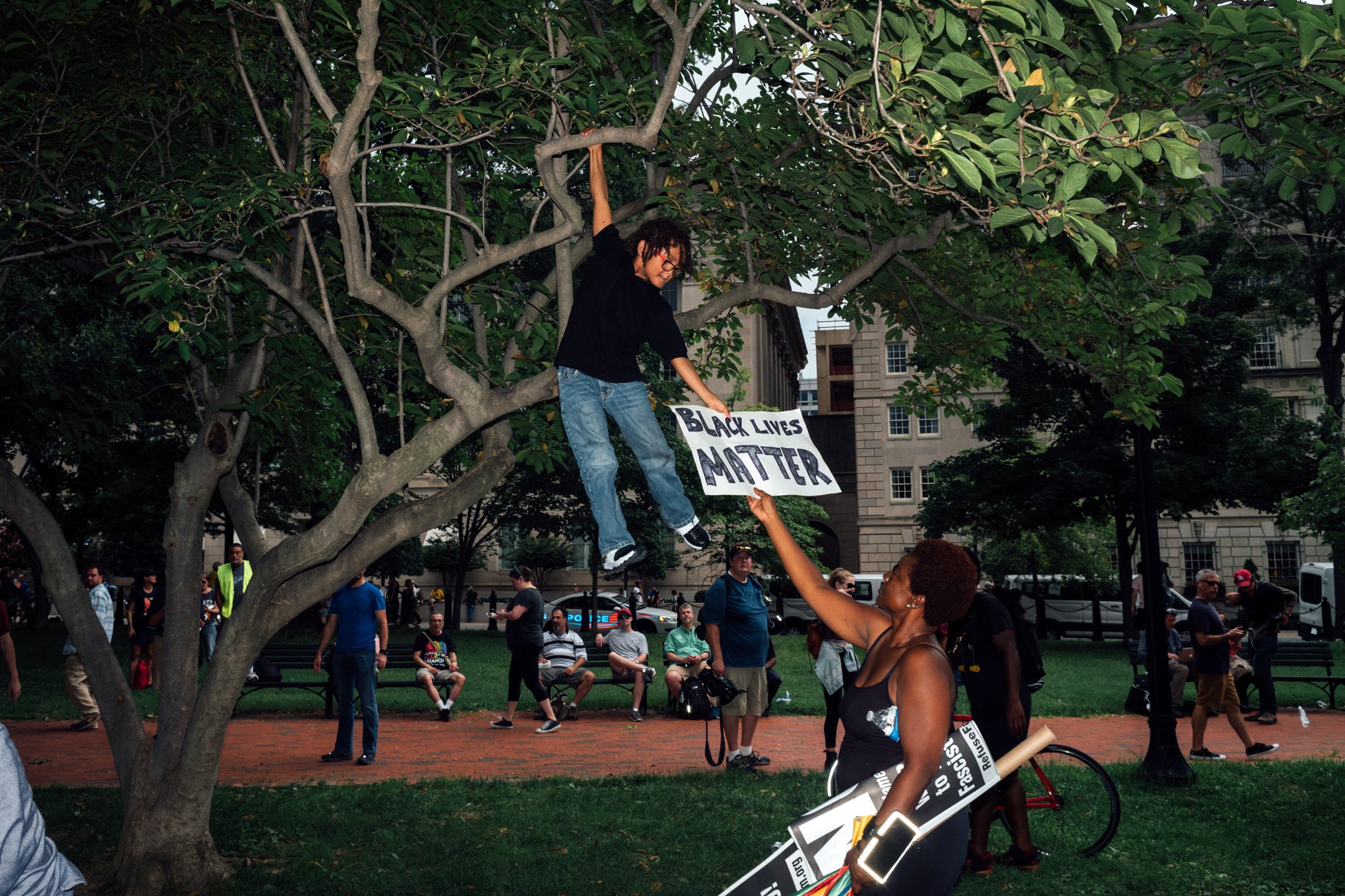
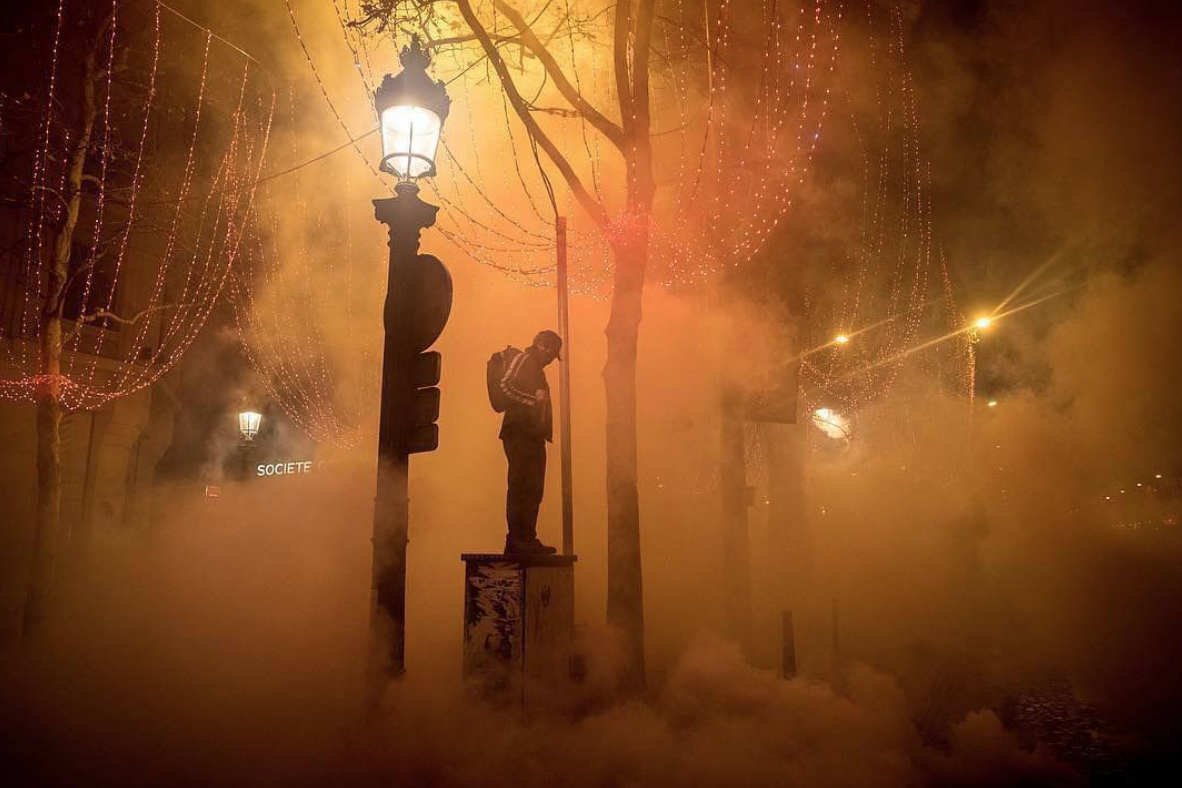
Reactions
Comments Powered by Disqus